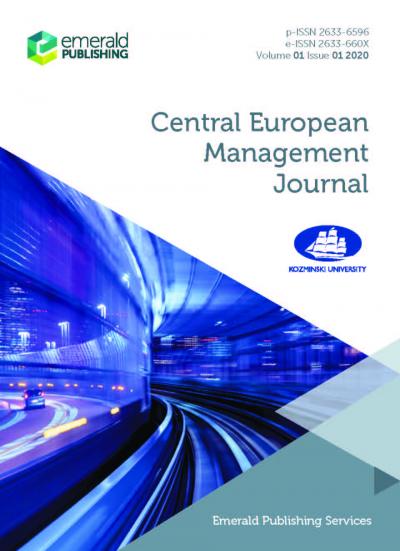Managing Supply Chains During the Covid-19 Pandemic
Cezary Mańkowski
University of Gdansk
Agnieszka Szmeter-Jarosz
University of Gdansk
Andrzej Jezierski
WSB University, Torun
2022 30 (4) Central European Management Journal
DOI 10.7206/cemj.2658-0845.91








